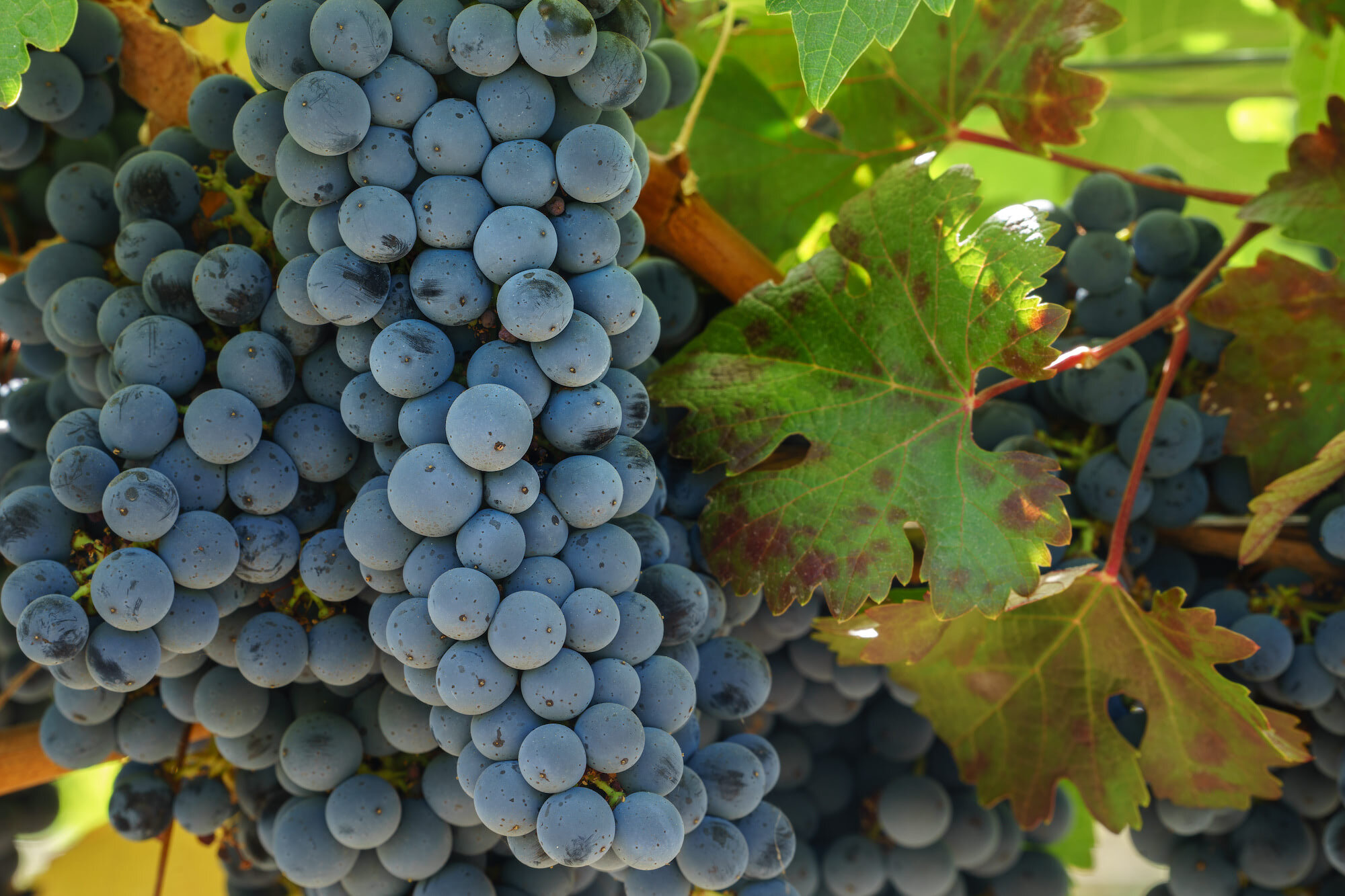
Napa Gold
SEASON — September 25-October 20
REGIONS — Napa Country
Appellations
During the early decades of winemaking in the Napa Valley, grapes were often planted in patchwork pattern vineyards in which many varieties were mixed. But experience has since shown the wisdom of matching grapes with locations whose microclimates and soils are best suited to particular grape varieties.
Within the Napa Valley, regions have emerged that possess distinct microclimates and terrains, imprinting recognizable characteristics on the grapes grown within them.
Vintners and growers within these regions delineate the boundaries of these growing areas, giving them names that reflect their regional designations, or appellations.
Data supporting a proposed American Viticultural Area, or AVA, is submitted to the government, which decides whether the proposed appellation designation will be granted.
The Napa Valley is itself an appellation. Within the Napa Valley appellation exists 14 subappellations, or AVAs, including: Atlas Peak, Chiles Valley District, Diamond Mountain District, Howell Mountain, Los Carneros, Mt. Veeder, Oakville, Rutherford, St. Helena, Spring Mountain District, Stags Leap District, Yountville, Wild Horse Valley and Oak Knoll District of Napa Valley. The Calistoga appellation is still pending approval.
Atlas Peak AVA
Climate: Cool, mountain-influenced, with temperatures about 10 to 15°F cooler than the Valley floor in summer. Above the fog line, there is a low diurnal change, with summer temperatures rarely above 90°F (30°).
Elevation: 760 to 2600 ft (231m to 792m).
Rainfall: 38 inches (96 cm) annually.
Soils: Volcanic in origin, with basaltic red color, shallow with limited water retention, so irrigation is often essential.
Geography
Bounded on both sides by mountains, the Napa Valley stretches approximately 30 miles in a northwesterly direction, its width ranging from five miles at the widest point near the city of Napa to just a mile where the valley narrows near the town of Calistoga.
Bisecting the valley is the Napa River, which follows the valley's tapered contour, and dwindles from a fully navigable river in its southern stretches to little more than a creek at its northern beginnings. The valley's topography changes with its length, from the windswept estuarine flats and gentle hills in the south to the valley's narrow tip at the town of Calistoga, cradled between the sheer walls of the Palisades at the foot of Mount St. Helena to the east and the forested Mayacamas Mountains to the west.
The Napa Valley's amiable climate makes it a veritable garden. A wide variety of fruits and vegetables thrive here: oranges, prunes, apples, olives and more. But what makes the Napa Valley truly unique is its remarkable suitability for the production of wine grapes. A maritime climate that produces cool nights and warm days combines with soils that are deep but not excessively fertile to yield grapes that are singular in their intensity, complexity and balance.
Several different microclimates and a wide array of soil profiles mean that different vineyards produce grapes that are unique in style and character - but uniformly high in quality.
The vineyard environments of the Napa Valley have evolved through geologic time. Like the rest of California, Napa Valley has had a very active and eventful geologic history. Many tectonic plates (large pieces of the earth's crust) have collided with North America to form California. As a result, there are many geological faults in the area, which have molded the topography of the Napa Valley and the mountains that surround it.
A great deal of volcanic activity occurred in the area about two million years ago. These volcanic eruptions deposited a series of ash and lava called the Sonoma Volcanics over much of Napa and Sonoma Counties, especially along the axis of the Mayacamas Range. The small hills which emerge from the valley floor north of Yountville were created by this volcanic activity.
Changes in sea level caused San Pablo Bay to alternately advance and retreat over the southern part of the valley several times. This resulted in the deposition of bay sediment (clays and sand) as soil parent material in the southern valley. The bedrock varies from coarse sandstones to marine conglomerates to volcanic basalts and tuff. These different parent materials give rise to soils with very different ability to retain water, texture and fertility.
Soils & Geology
The Napa Valley appellation is unique for the diversity of soils found in such a small geographic area. Soils of volcanic, maritime and alluvial origin exist, each created by geological events that have occurred over a 60-million-year history. The valley was formed by tectonic plate movement and volcanic activity, by alluvial waters and the flooding of San Pablo Bay, which once reached as far as the site of the present-day town of Yountville. Rocky knolls and alluvial fans interrupt the level expanses of the valley floor, each bearing testimony to geologic occurrences in the past.
The area's topography supports a wide variety of soils-more than 30 different types have been identified. Ranging from well-drained gravelly loams to moisture-retaining silty clays, these soils vary in depth and fertility. The structure and composition of the soil greatly affects the vegetation, including grapes, which it sustains.
In general, the soils found on the level flood plain of the Napa River and valley floor are deeper than the rocky soils covering the slopes and hills. Experience has shown, however, that a highly fertile and deep soil is neither necessary nor always desirable for the growing of premium wine grapes. While yields may suffer as a grapevine's roots struggle to penetrate the thin and rocky soils of hillside vineyards, the resulting stress often results in smaller grapes of highly concentrated color and flavors.
Climate
Defined by mountain ranges and influenced by the proximity to the Pacific Ocean, the Napa Valley enjoys a temperate climate perfectly suited to the growing of fine wine grapes.
The long growing season is marked by sunny, warm and dry days followed by cool evenings, an ideal combination for allowing grapes to ripen slowly and evenly. Within the Napa Valley Viticultural Area, the microclimates are distinctive and dramatic. The most moderate temperatures are found in the Carneros region, which is cooled by marine breezes that sweep through the Golden Gate and across San Pablo Bay. Farther up the valley, the Pacific Ocean exerts less influence: temperatures are warmer in the summer and cooler in the winter, and rainfall is greater than in the south. Configuration of hills, exposure and elevation all work to create distinct microclimates within the Napa Valley appellation.








